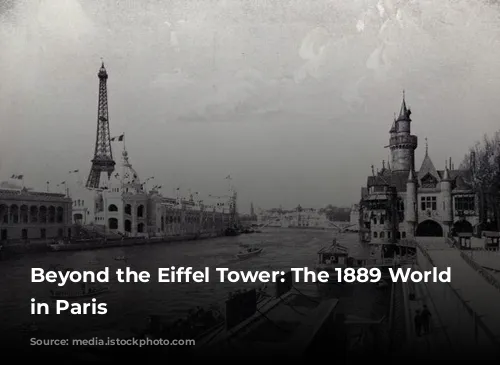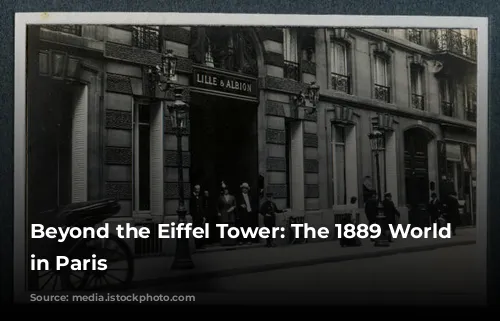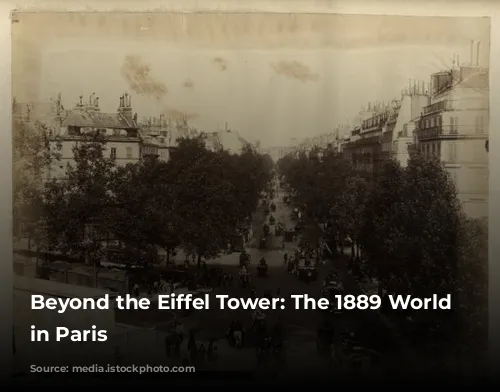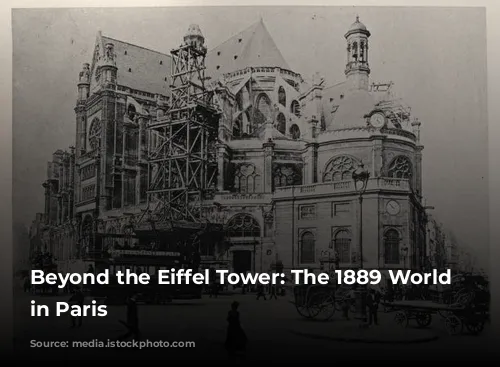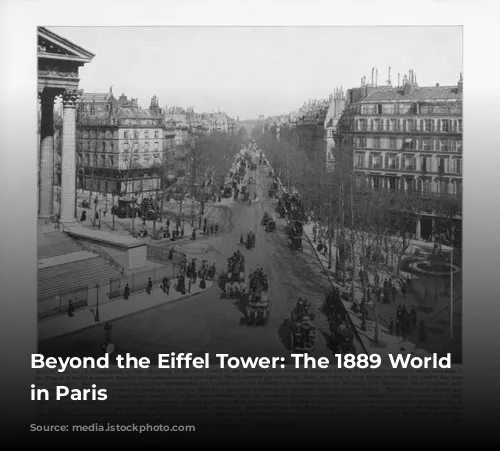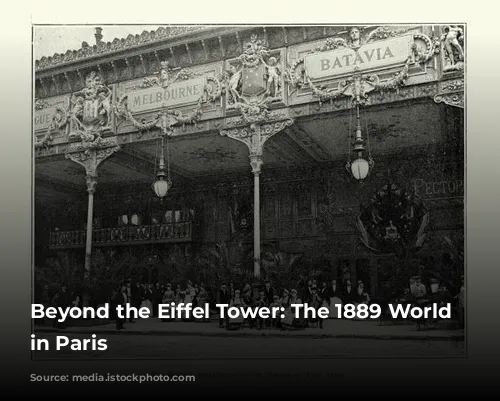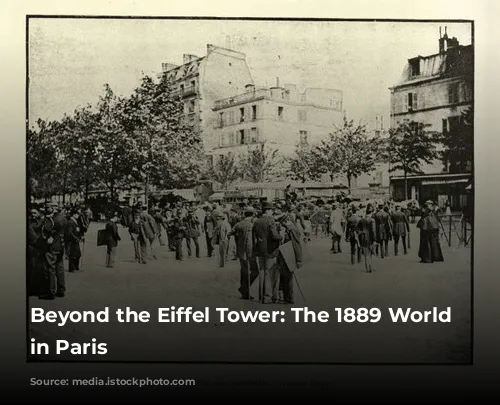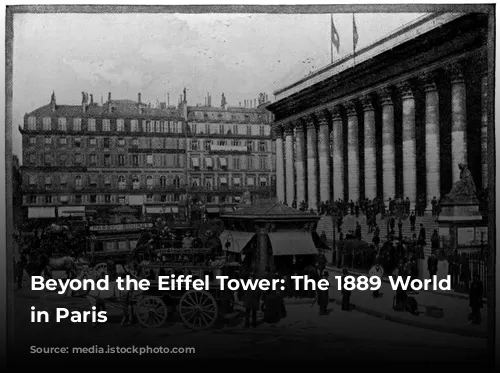The 1889 World Fair in Paris was a landmark event that redefined the concept of international exhibitions. While the Eiffel Tower remains its most recognizable legacy, the fair itself was much more than just a structure. It marked a pivotal point in the evolution of these grand celebrations, showcasing the burgeoning world of innovation and technology.
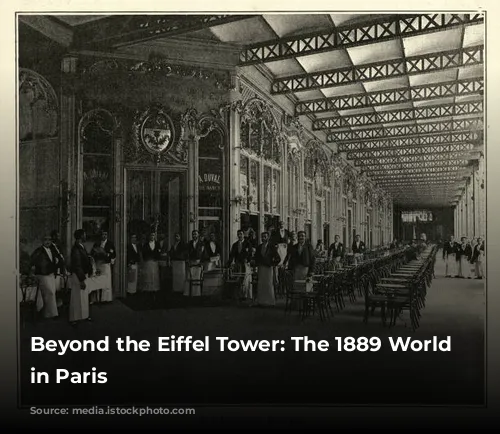
A Legacy of Exhibitions
The 1889 World Fair wasn’t Paris’s first foray into hosting international exhibitions. The tradition began in 1851 with London’s Great Exhibition, a magnificent spectacle housed in a revolutionary building made of iron, wood, and glass. France, fueled by a surge of national pride, quickly followed suit. In 1855, a grand palace adorned with a stone façade and iron and glass vaults graced the Champs-Élysées. Then, in 1867, a colossal oval structure enveloped a significant portion of the Champ de Mars, supplemented by charming pavilions nestled in a surrounding garden.
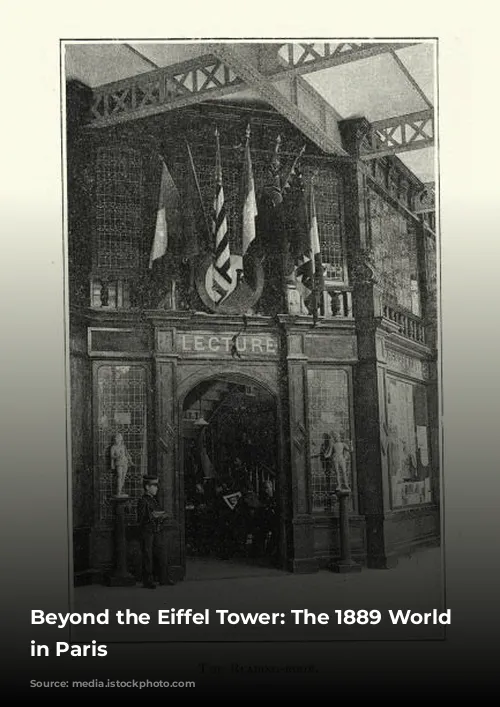
A Transformation in Scale and Scope
The 1878 World Fair marked a shift in the architectural landscape, introducing the Trocadero Palace with its majestic wings surrounding a vast concert hall. Simultaneously, the Champ de Mars saw the rise of meticulously designed glass galleries, their elegant simplicity juxtaposed with the bold angles of the pavilions.
The 1889 World Fair, however, transcended its predecessors in both scale and ambition. Held to commemorate the centennial of the French Revolution, it aimed to highlight the strength of France’s burgeoning industries and colonial empire. Stretching across 125 acres, the fair adopted a familiar format, with galleries extending across the Champ de Mars, crowned by imposing domes, and pavilions scattered amidst the gardens. This time, however, there was a distinct American presence, as European monarchies boycotted the event.
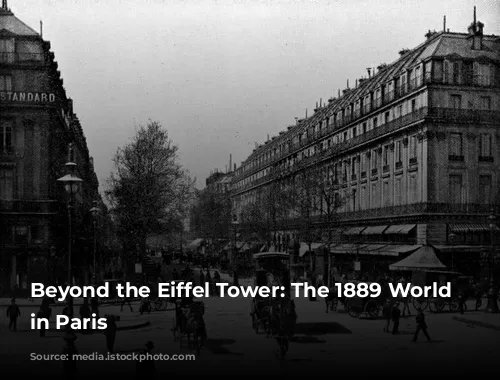
A Showcase of Technological Marvels
The 1889 World Fair wasn’t just about celebrating progress; it was about showcasing groundbreaking technological achievements. Two iconic structures, the Galerie des Machines and the Eiffel Tower, epitomized this ambition. The Galerie, a sprawling hall spanning 420 by 110 meters, boasted a revolutionary design, with no internal supports. The Eiffel Tower, on the other hand, reached for the sky, becoming the tallest structure in the world.
While the Galerie was unfortunately dismantled in 1909 due to the lack of a sustainable use, the Eiffel Tower, a testament to Gustave Eiffel’s ingenuity, stood tall. Other pavilions were also taken down and rebuilt elsewhere, their legacy enduring in different forms.
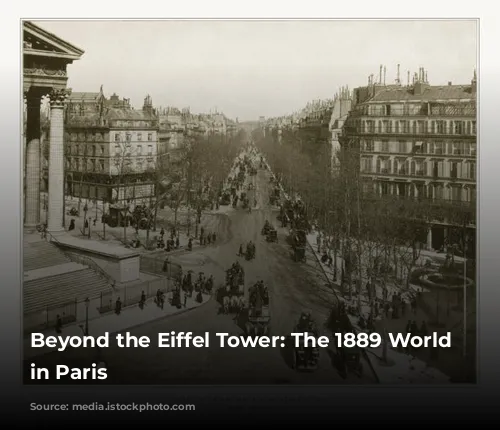
A Popular Success and Lasting Impact
The 1889 World Fair drew an extraordinary crowd of over 32 million visitors in just six months. This unprecedented popularity underscored the public’s fascination with the marvels on display. The fair’s diverse exhibits, from artistic creations to cutting-edge industrial products, presented a captivating panorama of progress.
While the fair itself has long since vanished, its impact is still felt today. It ushered in a new era of technological innovation, with groundbreaking inventions like electricity and the telephone captivating audiences. It was a spectacle where the raw power of metal frameworks met the elegance of ceramics, terracotta, and stained glass, creating an unforgettable fusion of artistry and engineering.
Despite the passage of time, the spirit of the 1889 World Fair remains a powerful reminder of human ingenuity and the relentless pursuit of progress.

